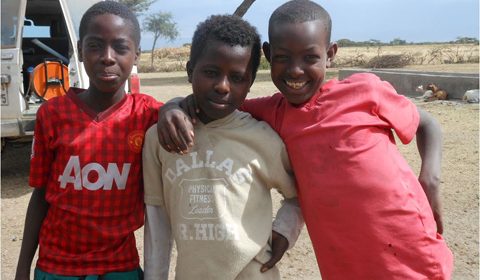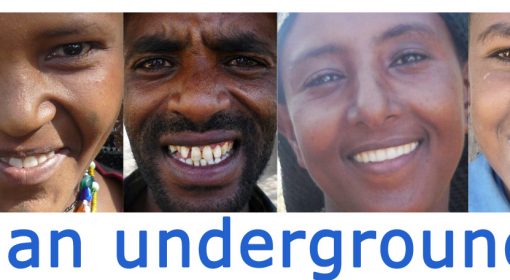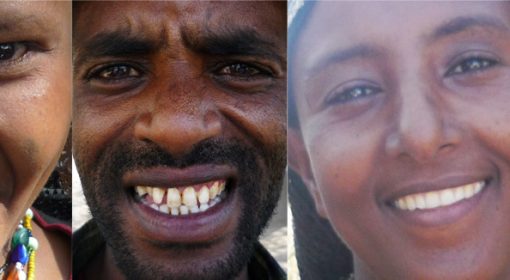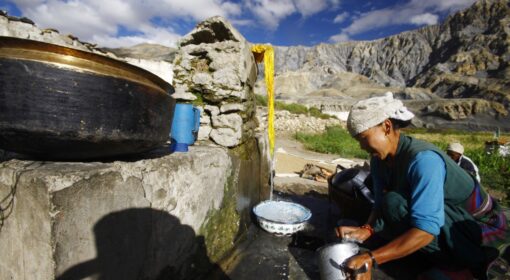By Sara Datturi
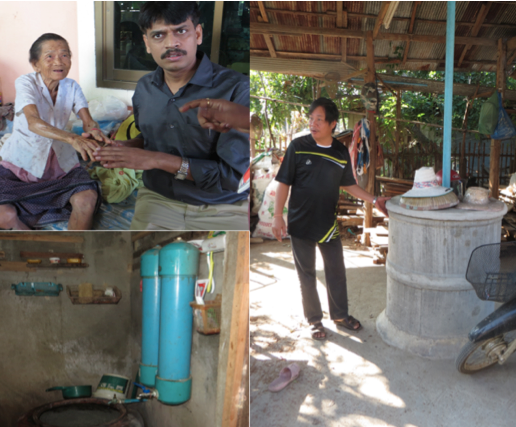 Postcard from the International Society Fluoride Conference, 25-28 November 2014, Chiang Mai.
Postcard from the International Society Fluoride Conference, 25-28 November 2014, Chiang Mai.
Due to the plentiful water resources in Thailand, the Thai way of life is inseparable from water and waterways. Throughout its history, Thailand’s capitals have been situated near rivers. Ayutthaya, Thon Buri and Bangkok for instance are all located on the banks of the Chao Phraya River. For hundreds of years, the Chao Phraya River has been serving as the country’s main water corridor. And the Thais have built their homes on its banks including those of its tributaries and connecting canals.
For Thai culture water is the holy element. It is the light from which life initiates. Water is the embodiment of pure, capable to wash away all kinds of evil and misfortunes and bring good luck and happiness instead. It is also center point of rituals and ceremonies. It is used as a means of greetings, blessing and showing respect. Without the conservation and protection of water the future will be in the dark.
Thailand is also known as the place where people (old, young, male, female) have a great white smile. Unfortunately, in parts of the country this privilege is taken away from people and many are not so eager to smile anymore. This is due to the effects that high fluoride intake in humans can have: dental fluorosis, black mottled stripes in the dental enamel. Dental and skeletal fluorosis are present in the north and north-east of the country, where high concentration of fluoride in excess of the World Health Organization guidelines (1.5 mg/l) occurs.
Thai Water and health regional ministries have been adopted several strategies to mitigate the problem. Prevention, epidemiology of fluorosis and fluoride removal technologies are all priority lines that these local authorities are trying to implement. Fluoride, natural element of this world, may cause negative effects for human being if its intake is too high. However, currently in the world it is hard to estimate the exact number of people who have fluorosis diseases due a high daily intake of fluoride. According to UNESCO, 200 million of people worldwide are drinking water with level of fluoride superior to 1.5 mg/l WHO guidelines. But how many people are suffering from health diseases or are at risk to develop them because of a high intake of fluoride coming from different sources? What is the level of fluoride that does not harm the humans being? Which climate, geographical, mass index do we need to take in consideration? Why certain people are more or less expose to those diseases even if their fluoride intake is high?
Fluoride is consumed by humans through drinking water, food, salt minerals and exposure to pollution from charcoals or minerals that contains high fluoride concentrations. The vulnerability to different forms of fluorosis (dental and skeletal fluorosis but also other forms) of people that have high daily intake, changes according to the climate, body index, gender, health status and diet patterns. In fact, research undertaken by professor Susheela and other scientists indicate that high quantities of antioxidants, calcium, and vitamins can reduce the harmful health effects.
During four days at the International Society for Fluoride Research conference in Chiang Mai, several researchers, experts in the field presented the latest findings on fluoride epidemiology, mitigation and removal. Professor Susheela from India presented a research on how anemia during the pregnancy period is exacerbated by the fluoride intake (Susheela, 2014). This medical condition may cause children to be born with low weight or to have a intrauterine death. Changing mother’s diet containing high fluoride intakes such as salt and mineral spices, tea and drinking water to a free fluoride one with calcium, vitamin C and other antioxidants vegetables, improves maternal and infant health. High fluoride intake might also be one of the causes for brain damage, cardiovascular and thyroid issues, infertility and incapacity of main proteins in the blood (Su, 2014; Tripathi, 2014; Chauhan, 2014; Quadri, 2014).
Mitigation strategies are also needed in Europe and Sweden where in some high fluorotic areas, people still drinking from private shallow wells containing high fluoride concentration. However, since there is no law, which makes it mandatory having a water quality check, there are high risks for public health (Berger, 2012). Another study from Thailand and Japan shows that the fluoride content of cooked rice is affected by not only the fluoride concentration in soaking water, but also by the cooking methods and the soaking time. Based on the result of this study, it is recommended not to use fluoride containing groundwater for cooking and, at least, to use other waters such as bottled water for rice soaking. Shortening the rice soaking time can also lower the fluoride absorption by rice.
Fluoride removal strategies are currently moving in different directions according to the context. In India, in some rural areas, local authorities are subsidizing bottled water to families suffering from fluorosis as part of health interventions. Furthermore, advises of which diet to follow is promoted. In Thailand, regional authorities are promoting the extensions of safe sourcing of water supplies to also rural areas. In the mean time, rainwater harvesting technologies and bone char are the fluoride removal technologies preferred. However, since the increasing of pollution and its health risks, rainwater-harvesting technologies are being abandoned.
In Tanzania, in the last fiftteen years, professor Eli Dahli has been working to adjust the technology of bone char in order to make it efficient from a cost, fluoride removal capacity and production way. He has also being setting up a small company for the design, production and selling of bone char in Tanzania. The epidemiology of fluorosis, prevention and mitigation needs to be addressed in parallel – not only by countries that are affected by natural fluoride presence in groundwater, but also by the ones that have in place the rather controversial practice of drinking water fluoridation. Understanding the concentration of fluoride in water and food, its spatial and geological distribution in groundwater, health effects and the fluoride removal technologies (and their exact fluoride removal capacity, acceptance and cost-efficiency) is fundamental for address and implement multidisciplinary interventions.
The International society of fluoride Research was created 49 years ago to raise the awareness about fluorosis in the world, and to allow researchers from different disciplines and countries to share their findings and strategies to mitigate the problem. Almost fifty years later, this epistemic community stills alive and more active than ever. However, its strength and impact can be higher if real research collaborations and funds will be established and internal discussion promoted in light of the current global changes. Thai people are entitled to smile again; people worldwide are entitled to have safe drinking water. We can still pray and believe that water will be always bringing happiness or we can do something about it.
More information about the latest researches presented at the conference can be found at this website.
